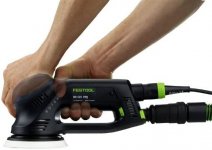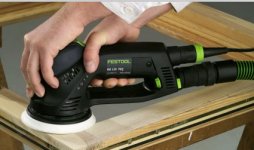Hi I purchased a RO 125 FEQ through Festool Recon, and since I took it out of the box and tried it the first time it did not seem right. I have only heard how smooth these sanders are supposed to be and it was not from the first time I used it. I called customer service and they told me to put in to send it back for repair, which I did. I got a call a couple days later saying the tech found nothing wrong with it, I said I have a video of the wobble I can email them which I did right after the phone call. I heard no answer to the email and a couple days later the sander showed back up at my doorstep.
Here is a videoof my issues, please tell me this is not normal for Festool Sanders? After spending that much on a sander, was really hoping for better.
Thanks
-Matt
Here is a videoof my issues, please tell me this is not normal for Festool Sanders? After spending that much on a sander, was really hoping for better.
Thanks
-Matt



